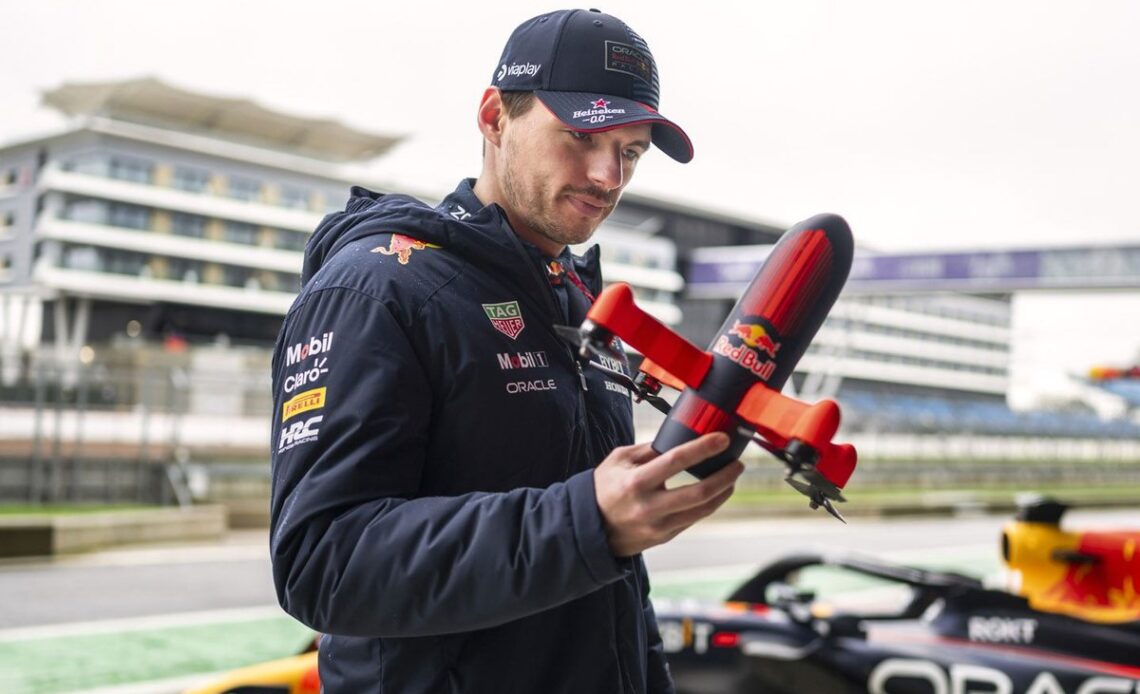A rapid flick right of the steering wheel ensues to correct the slide. Then he’s on his way down the Hangar straight in a flash of blue, red, and yellow. Yet the error is utterly understandable: Silverstone was soaking as Red Bull shook down its latest challenger two weeks ago.
But the speed of the car even in such conditions, and the heart-stopping work to gather up the wayward rear, is being shown in a stunning new spectacle. It’s a potential game-changer for how F1 television pictures are captured.
This is because Verstappen is being chased by a camera drone. One that can hit a top speed of 220mph and follow an F1 machine for a full lap of Silverstone’s grand prix layout. And it’s been developed by Red Bull’s Advanced Technologies division, in conjunction with the Dutch Drone Gods company.
FPV (first-person view) drone pilot, Ralph Hogenbirk, also known as Shaggy FPV, takes up the story to Motorsport.com: “About one year ago, Red Bull came to us with a question: ‘we’ve been thinking about this for a while, we want a drone that can follow a Formula 1 car for a full lap, keep up, film it and make something a video that looks cool as well – can you do it?’
“Then we started working out how could we ever get it to work.
“We saw some ideas from people that have done fast drones before. They were meant to go fast, one time, in a straight line. But then they didn’t have any HD cameras, no recording capabilities – so that’s where we just developed that idea and started experimenting how we could do it.
“This is the third version already, so we went a long way just to get it to work.”
Red Bull’s stated aim is to try to recapture something of the magic of old F1 broadcasting – think the grainy, moving onboard footage from the 1980s and 1990s. The cars aren’t going any slower now – in so many areas F1 overall is faster – but the progress in camera and broadcasting technology means the current footage loses a less definable but important quality.
Then there is something you can clearly see is different in modern F1 broadcasting compared to that of the past.
“When you go for the wider shots where you can see the car, you lose that sense of speed,” 13-time grand prix winner, Red Bull ambassador and TV production company co-founder David Coulthard tells Motorsport.com.
“If you go tight, again, you’ve got no sense of it. In car shots are great because it focuses on the cockpit, but again you’re not really getting the…
Click Here to Read the Full Original Article at Motorsport.com – Formula 1 – Stories…

